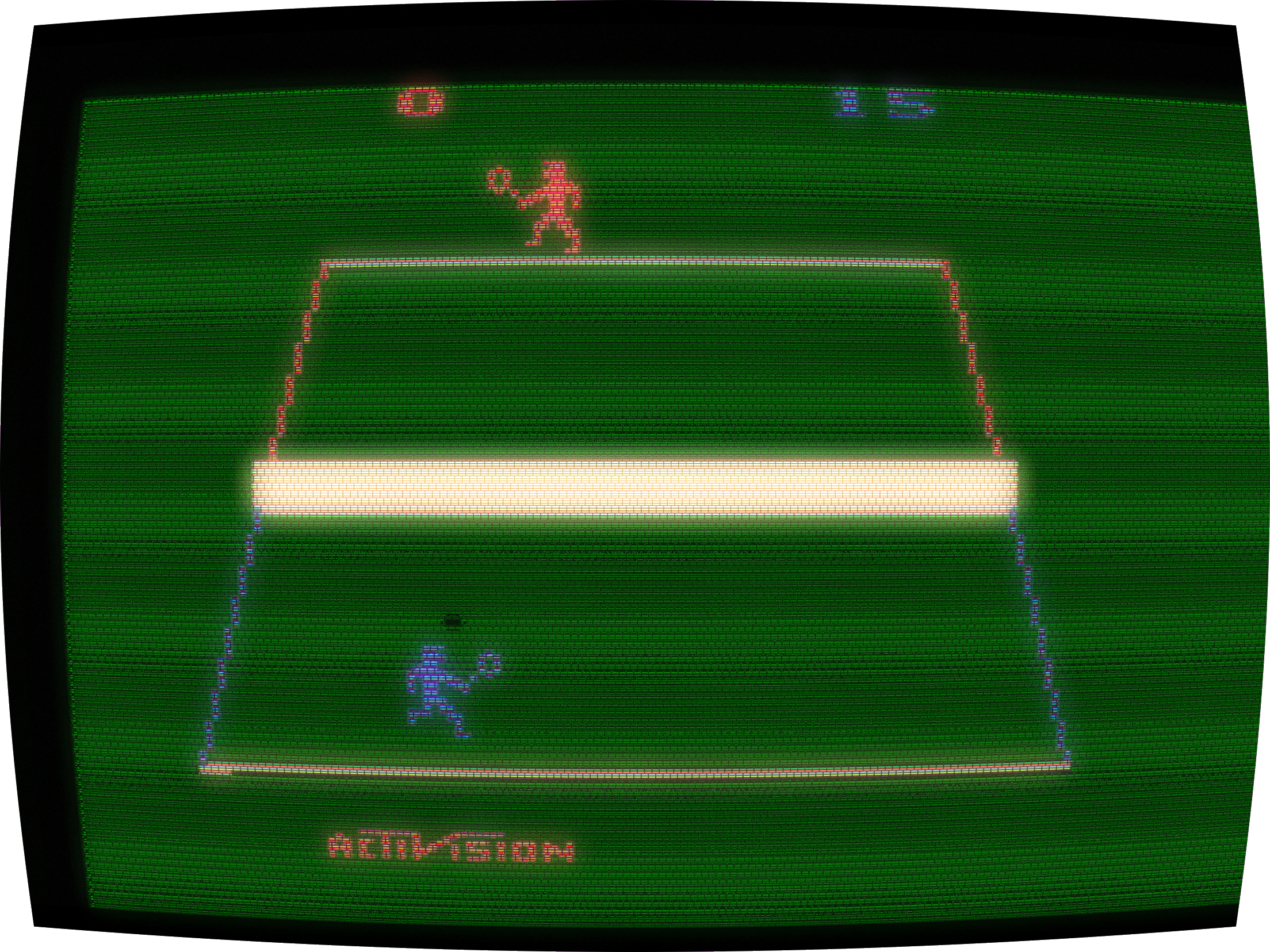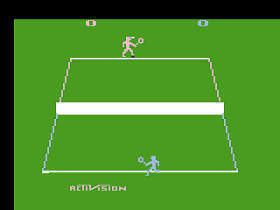Tank
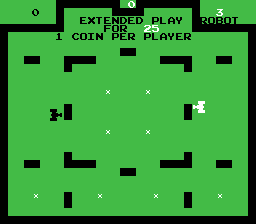 The Game: Two players each control a fearsome armored fighting vehicle on a field of battle littered with obstacles. The two tanks pursue each other around the screen, trying to line up the perfect shot without also presenting a perfect target if they miss. In accordance with the laws of ballistics and mass in the universe of Saturday morning cartoons, a tank hit by enemy fire is bounced around the screen, into nearby wall or mines, spinning at a very silly velocity, and battle begins anew. (Kee Games [Atari], 1974)
The Game: Two players each control a fearsome armored fighting vehicle on a field of battle littered with obstacles. The two tanks pursue each other around the screen, trying to line up the perfect shot without also presenting a perfect target if they miss. In accordance with the laws of ballistics and mass in the universe of Saturday morning cartoons, a tank hit by enemy fire is bounced around the screen, into nearby wall or mines, spinning at a very silly velocity, and battle begins anew. (Kee Games [Atari], 1974)
Memories: In the early 1970s, arcade distribution was a closely-guarded, exclusive thing. And to an ambitious guy like Atari founder Nolan Bushnell, this represented a problem. Atari wasn’t an old-school pinball outfit like D. Gottlieb & Co. or Bally, and was bucking the system just to land a deal with regional distributors across the country anyway. The distribution system – which allowed one distributor to represent Gottlieb games exclusively in his area, while a competitor would be the only game in town for Bally/Midway fare, for example – was created in the pinball era; many arcade operators would deal exclusively with a single distributor, and of course there were franchise arcades owned by companies like Bally, such as Aladdin’s Castle. It was entirely possible, and not uncommon, to see some manufacturers represented only at one or two arcades in a given area, and their rivals represented only at others. Which was fine with pinball manufacturers, but Bushnell wanted to place Atari’s video games everywhere. [read more]

 The Game: Activated by leaving a cartridge out of the slot, powering the system up and pressing one of the selector keys, Tennis and Hockey are built into the system. Timed games can be selected, and the traditional rules of each sport apply. (Fairchild, 1976)
The Game: Activated by leaving a cartridge out of the slot, powering the system up and pressing one of the selector keys, Tennis and Hockey are built into the system. Timed games can be selected, and the traditional rules of each sport apply. (Fairchild, 1976) The Game: It’s all the thrills of pinball, minus approximately 75% of the excitement! Use your joystick to control the plunger tension and launch your ball into play. Use the action button to pop the flippers, keeping your ball on the field and out of trouble. The bumpers and spinner score big points…well, relatively speaking. (Magnavox, 1979)
The Game: It’s all the thrills of pinball, minus approximately 75% of the excitement! Use your joystick to control the plunger tension and launch your ball into play. Use the action button to pop the flippers, keeping your ball on the field and out of trouble. The bumpers and spinner score big points…well, relatively speaking. (Magnavox, 1979)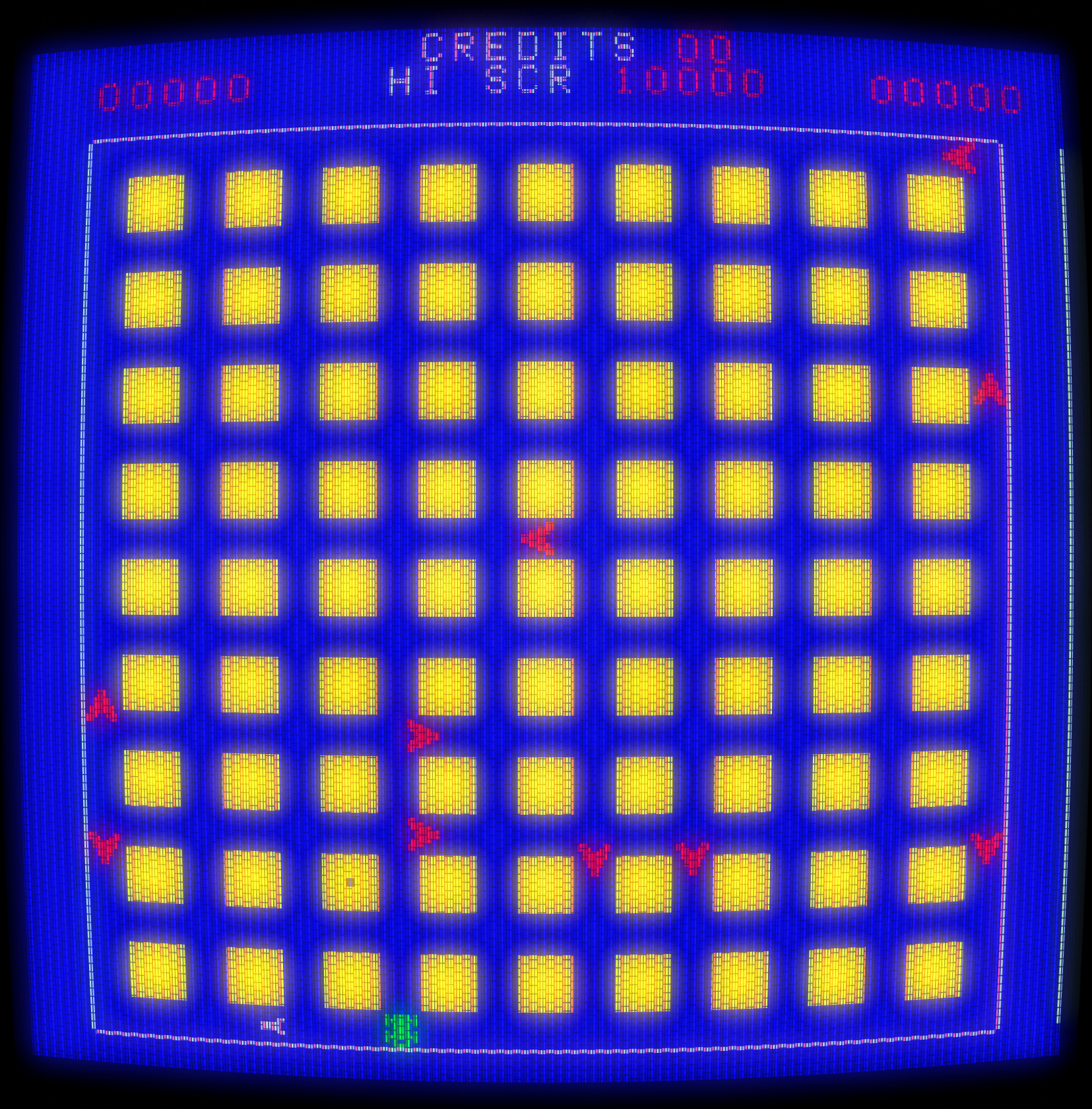
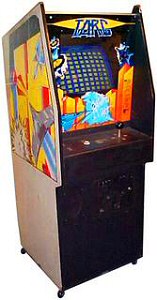 The Game: You’re trapped in a symmetrical maze with a bevy of robotic target vehicles – “Targs” – which are programmed to do just one thing: collide with your vehicle. You have one advantage on these decidedly mean streets, however – you can fire missiles ahead of your car (but the Targs are capable of dodging your projectiles too, so don’t get too cocky). Every once in a while, one of the impregnable blocks in the maze will disgorge a new enemy which is just a little bit faster and deadlier than the rest. Clearing the screen of Targs advances you to a new level with faster enemies – and eventually they’ll put the brakes on your attempts to survive. (Exidy, 1980)
The Game: You’re trapped in a symmetrical maze with a bevy of robotic target vehicles – “Targs” – which are programmed to do just one thing: collide with your vehicle. You have one advantage on these decidedly mean streets, however – you can fire missiles ahead of your car (but the Targs are capable of dodging your projectiles too, so don’t get too cocky). Every once in a while, one of the impregnable blocks in the maze will disgorge a new enemy which is just a little bit faster and deadlier than the rest. Clearing the screen of Targs advances you to a new level with faster enemies – and eventually they’ll put the brakes on your attempts to survive. (Exidy, 1980)

 The Game: Two little white robots represent assorted economic woes, and they drain your cash rapidly if they catch up with you. The object of the game is to come out with the most money left at the end of the two-player game.
The Game: Two little white robots represent assorted economic woes, and they drain your cash rapidly if they catch up with you. The object of the game is to come out with the most money left at the end of the two-player game.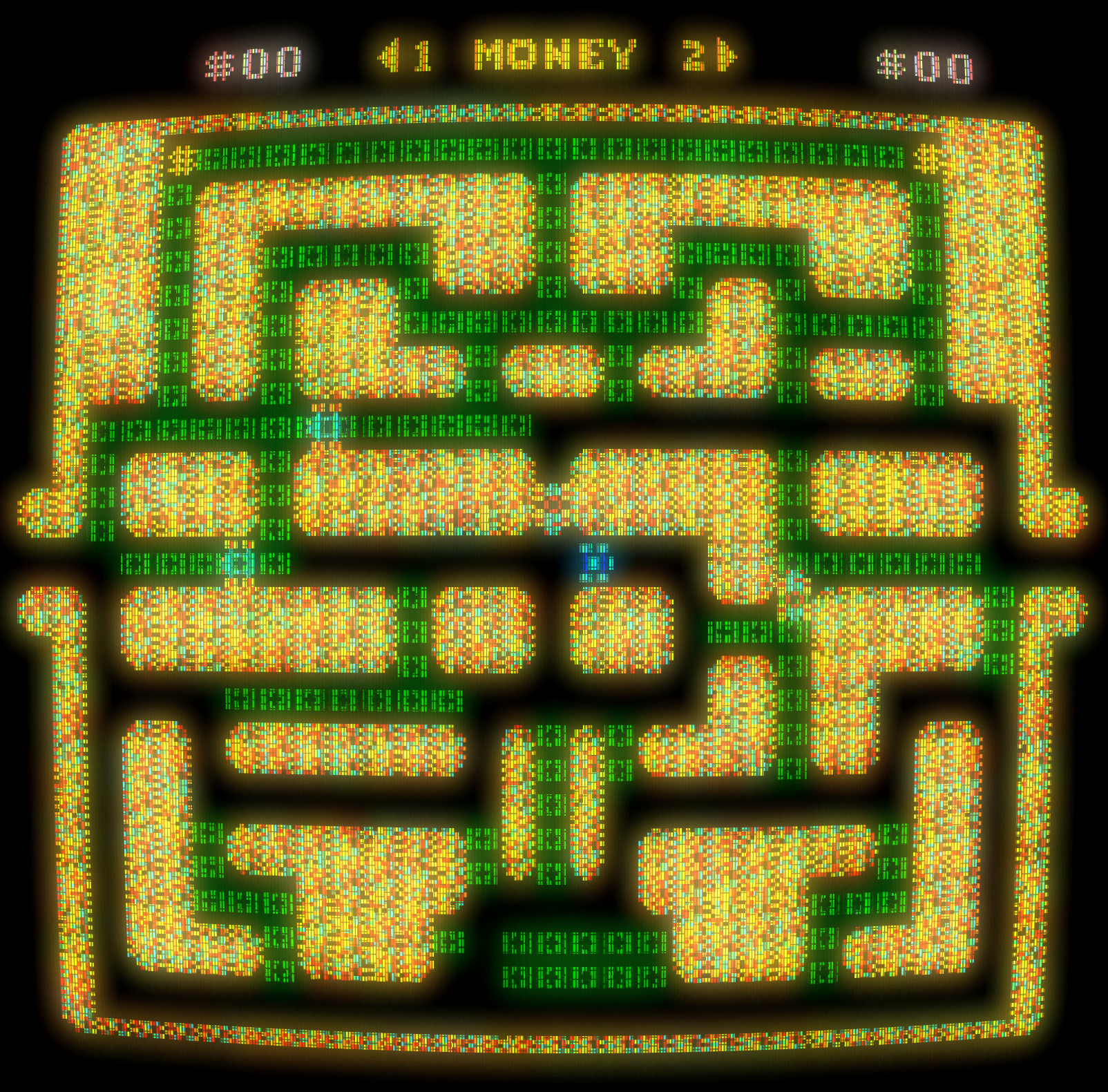
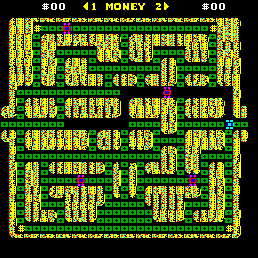 The Game: You’re on the run from the long arm of the law, and the police radio dispatchers have put an an APB out for you. Money lines the city streets, and you must evade the cop cars and stash away all the cash until the screen is cleared. Four special items in the corners of the screen enable you to turn the table on your pursuers and temporarily eliminate them from the screen – but they’ll be back. If the police cars catch you, you have the right to remain silent; if they catch your last getaway car, you have the right to see “game over” on the screen. (Pacific Novelty, 1981)
The Game: You’re on the run from the long arm of the law, and the police radio dispatchers have put an an APB out for you. Money lines the city streets, and you must evade the cop cars and stash away all the cash until the screen is cleared. Four special items in the corners of the screen enable you to turn the table on your pursuers and temporarily eliminate them from the screen – but they’ll be back. If the police cars catch you, you have the right to remain silent; if they catch your last getaway car, you have the right to see “game over” on the screen. (Pacific Novelty, 1981)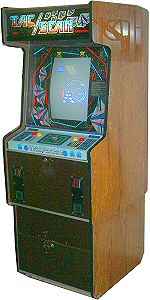 The Game: Commanding a fleet of ships, you use their combined firepower to wipe out an onslaught of alien ships (which, perhaps not at all surprisingly, are firing back at you). It only takes one hit to lose one of your own fleet, and when your fleet is completely wiped out, the game is over. Until then, do as much damage to the enemy armada as you can. (Sega/Gremlin, 1981)
The Game: Commanding a fleet of ships, you use their combined firepower to wipe out an onslaught of alien ships (which, perhaps not at all surprisingly, are firing back at you). It only takes one hit to lose one of your own fleet, and when your fleet is completely wiped out, the game is over. Until then, do as much damage to the enemy armada as you can. (Sega/Gremlin, 1981)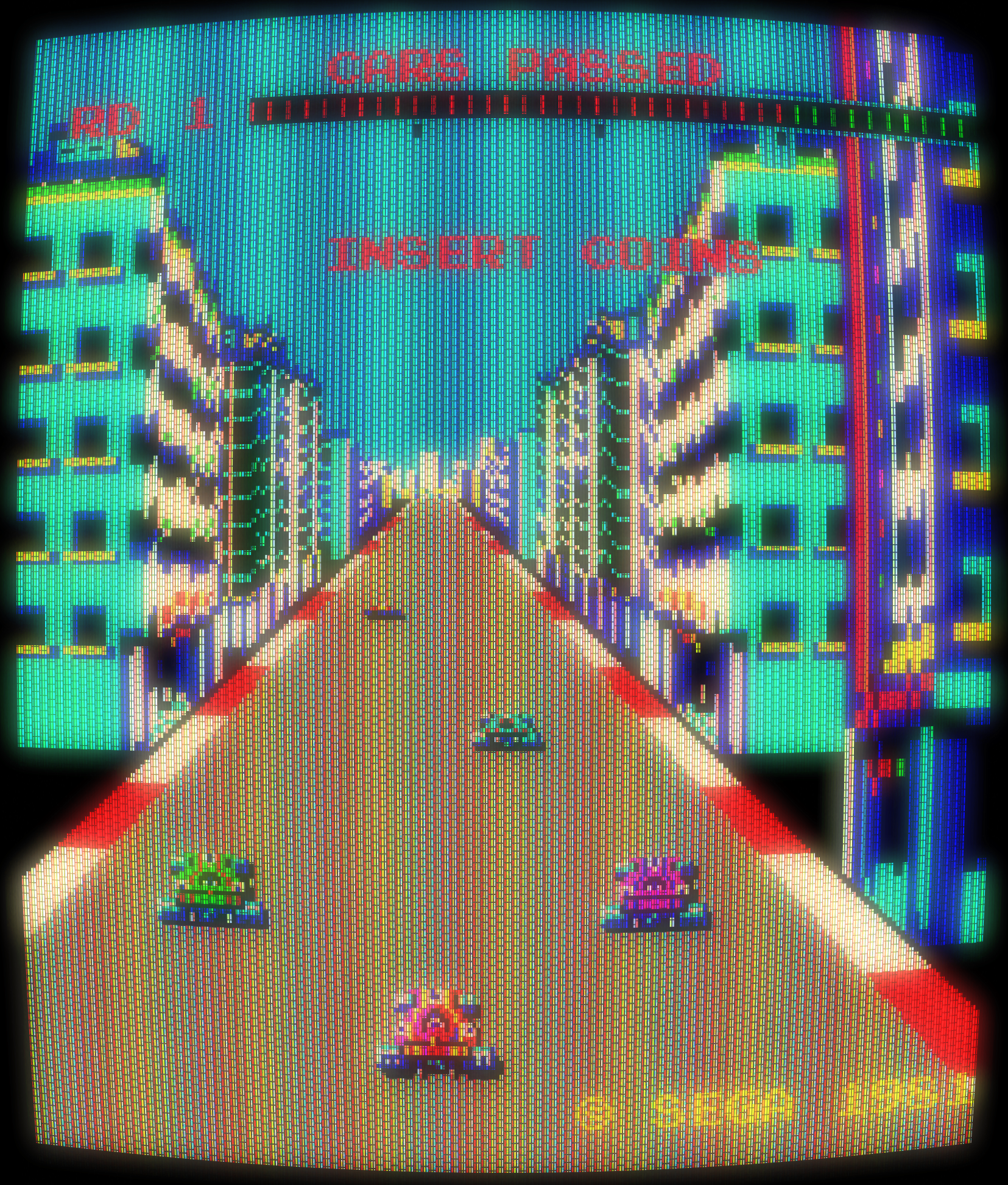
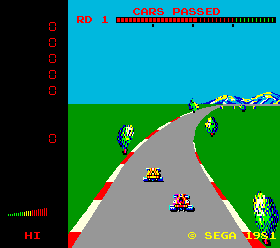 The Game: It’s pretty straightforward…you’re zipping along in your Formula One race car, trying to avoid other drivers and obstacles along the way while hauling a sufficient quantity of butt to win the race. (Sega, 1981)
The Game: It’s pretty straightforward…you’re zipping along in your Formula One race car, trying to avoid other drivers and obstacles along the way while hauling a sufficient quantity of butt to win the race. (Sega, 1981)